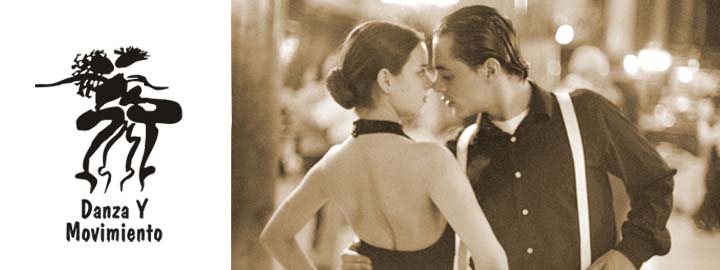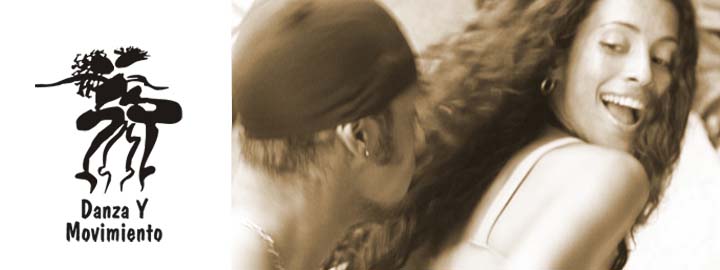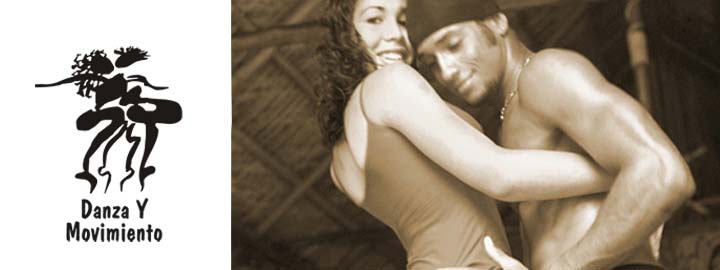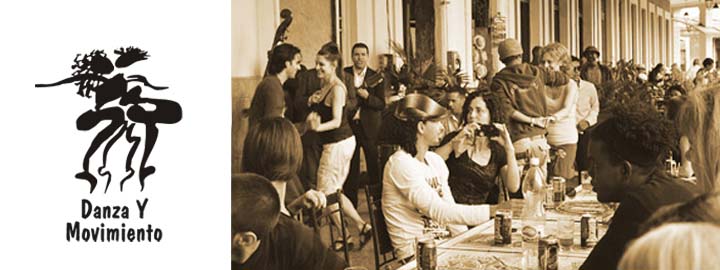Tango: Various: Round Tango
Artist: Saiace, Zaida
2003 | DYM
Details:
N/A
Duration: 61 min.
Tracks
Composer:
Author:
Publisher:
Record year:
Country:
ean:
lc:
isrc:
Composer:
Author:
Publisher:
Record year:
Country:
ean:
lc:
isrc:
Composer:
Author:
Publisher:
Record year:
Country:
ean:
lc:
isrc:
Composer:
Author:
Publisher:
Record year:
Country:
ean:
lc:
isrc:
Composer:
Author:
Publisher:
Record year:
Country:
ean:
lc:
isrc:
Composer:
Author:
Publisher:
Record year:
Country:
ean:
lc:
isrc:
Composer:
Author:
Publisher:
Record year:
Country:
ean:
lc:
isrc:
Composer:
Author:
Publisher:
Record year:
Country:
ean:
lc:
isrc:
Composer:
Author:
Publisher:
Record year:
Country:
ean:
lc:
isrc:
Composer:
Author:
Publisher:
Record year:
Country:
ean:
lc:
isrc:
Composer:
Author:
Publisher:
Record year:
Country:
ean:
lc:
isrc:
Composer:
Author:
Publisher:
Record year:
Country:
ean:
lc:
isrc:
Reviews
El sello Los Años Luz nos acerca nuevamente la posibilidad de reencontrarnos con una música cuya clave está en la esencia del sonido y el mensaje (característica visceral de la totalidad de su catálogo). Se trata, esta vez, del disco Round tango , de la virtuosa pianista y arregladora argentina Zaida Saiace.
Amalgamando lenguajes de música clásica, contemporánea y de tango, Zaida Saiace presenta un material exquisito que asombra por su bella complejidad y el minimalismo arreglístico de sus doce piezas. Aunque lo expuesto suene paradójico, ambas condiciones pueden darse la mano y parir un universo sonoro muy cercano a la perfección. Además, la paradoja siempre elige el destierro cuando la música se impone desde su más cálida esencia.
La Saiace es una prestigiosa artista que, nacida en Argentina, ha estudiado dentro y fuera de fronteras. Su notable calidad le ha conferido especial reconocimiento en Europa, continente en el cual reside y realiza giras permanentemente. Ha editado varios discos con anterioridad, entre los que se destaca Diario de pianista (1992), una antología para piano solitario que reúne una serie de composiciones argentinas, brasileñas y francesas del siglo 20. Aquel material fue decisivo para los años que siguieron desde aquella edición hasta el presente, fusionando música culta y popular, dando a luz un repertorio singularmente íntegro.
Round Tango se grabó en Alemania, en noviembre del 2001, con algunos agregados en el Instituto Goethe, de Buenos Aires.
Para la concreción de su nuevo disco, Zaida Saiace se rodeó de un equipo muy interesante compuesto por la eminencia guitarrística Quique Sinesi, el versátil bandoneonista Pablo Mainetti, los contrabajistas Enrique Díaz (de excelente trabajo en El retorno , la canción siete) y Fernando Galimany (quien acompañó a Saiace en sus recientes shows porteños), el baterista Horacio López y el percusionista Daniel Gioia.
La obra contiene temas de Piazzolla, Erik Satie (de la serie de la Gnossienne ), Expósito y Stamponi, Mores, Dino Saluzzi, Guastavino y la propia Zaida.
El lenguaje pianístico de la Saiace es lírico y, por momentos, de una dulce violencia. Al estilo de Satie en las Gymnopédies , la pianista utiliza armonías estáticas de gran simplicidad para crear una sensación intemporal de belleza.
Ideal para escuchar con todas las luces de la concentración, para percibir cada ataque de los dedos a las octavas del piano o para hacerlo un domingo de mañana, temprano, en estado de pre conciencia, cuando aún no se ha descubierto el día ni la hora por completo. En cualquiera de las dos situaciones, la música penetra cada rincón del alma y la deja en estado de plenitud, conmovida, expectante. Así es Round Tango . Apasionante y hermoso.
(Por Marcelo Rodríguez del semanario Redes de Concordia)
Marcelo Rodríguez, 20040801
Francis Poulenc ?integrante de ese genial grupo que a partir de 1919 fue conocido como Les six- decía sobre el impresionismo reinante : « Estamos cansados de Debussy y de Ravel. Deseamos una música clara, sana y robusta; una música que resulte tan francesa como Petruschka de Strawinsky, es rusa: Parade, de Satie es el ejemplo?. Esta necesidad de músicas nacionales tiene una vuelta de tuerca más, pero sin la rigidez en cuanto a las formas como ocurría a fines del siglo XIX y principios del XX. Lo dice Zaida Saiace: ?La interpretación, la improvisación y la composición no eran lo mismo. Pero andaban cerca. Y se juntaron?
Con un lenguaje ligado a Satie por economía y elegancia a la hora de poner las notas y la violencia del tango más visceral, Round Tango funciona con un doble sentido único: ?Round? como alrededor, como darle vueltas, tangencial pero profundamente. Y ?Round? como espacio y tiempo para el combate, la discusión con la forma y el género. Saiace maneja los matices desde el piano, logrando la más sutil finesa en Picasso, de Piazzolla, o haciendo tronar con las dos manos la melodía de ?Quedémonos aquí?.
El lenguaje del disco encuadra tanto los temas propios como las versiones, elegidas entre Piazzolla, Guastavino o Dino Saluzzi, compositores tan populares como académicos.
(Nicolás Russo, Revistaveintitrés)
Nicolás Russo, 20040823
La pianista Zaida Saiace, sola, con guitarra o en cuarteto (con bandoneón, contrabajo y batería), va de Erik Satie a Picasso de Piazzolla, o Quedémonos aquí de Homero Expósito y Chupita Stamponi, pasando por temas propios. Parte del material fue grabado hace años en Buenos Aires y otra parte en Alemania. Sin embargo, por encima de las diferencias de época en el registro y de procedencias estéticas de las piezas y de las distintas tímbricas, hay una gran coherencia cuyo eje es sobre todo, el vuelo poético de las interpretaciones.
(Diego Fischerman, Página 12)
Diego Fischerman, 20040823
La pianista argentina Zaida Saiace acaba de editar "Round Tango", un disco de una elaboradísima concepción interpretativa y compositiva en el que desde el tango, o alrededor de él, construye un universo musical propio y consistente con la participación de destacados músicos de la escena local, como el guitarrista Quique Sinesi y el bandoneonista Pablo Mainetti.
(Pedro Fernández Mouján, Diario C)
Diario C, 20040823
Ivan Sanchez (Batonga) [T]
Más que interesante el disco de esta pianista que es, al mismo tiempo, su puesta en largo a este lado del charco. Grabado entre Buenos Aires y Bonn, Round Tango es un trabajo muy serio cargado de versiones de clásicos (Piazzolla, el dúo de Stamponi-Expósito, Erik Satie, entre otros), además de composiciones de temas propios en los que Saiace se revela como sorprendente compositora. Citas a Fellini, Gardel y, cómo no Thelonius Monk y dedicatorias varias a quiénes ella llama sus maestros ?Egberto Gismonti, Nino Rota y Jörg Wolf, el pintor de la portada-, el toque de Saiace es, no obstante, extremadamente personal, de estilo más seco y expositivo que, por ejemplo, los de Horacio Icasto o Luiz de Moura Castro, músicos también familiarizados con el repertorio culto argentino.
Saiace crea su propio lenguaje, se muestra muy segura de su talento y rezuma un carácter fuerte, visible incluso en el texto del cuadernillo interior. Creo que vamos a escuchar a menudo su nombre por estos lares: la música de cámara necesita de buenas artes como las suyas.
Ivan Sanchez (Batonga), 20041130
Round Tango", etwa "Rund um den Tango" lauten Titel und Motto der CD der argentinischen Pianistin Zaida Saiace. Dass Tango mehr ist als ein Tanz, sondern eine Lebenseinstellung darstellt, versteht man nach Hören dieser wirklich herausragenden CD um so mehr. In diese Welt wird sogar Erik Satie nahtlos eingepasst und klingt ... -ja, nach Tango!
Auf der Platte finden sich u.a. Kompositionen von Piazolla ("Picasso) und Saluzzi ("Mónica") neben Eigenkompositionen von Zaida Saiace, die den Meistern in nichts nachsteht. Teilweise mit Band (u.a. Quique Sinesi an der Gitarre), teilweise solo zelebriert Saiace den Tango. In das Panorama fügt sie drei der "Gnossiennes" von Erik Satie ein, deren Interpretation außergewöhnlich zu nennen ist. Saiace gelingt es, das meditative, spieluhrartige Moment der Kompositionen Saties gleichermaßen einzufangen, wie ihnen eine lebensfrohe Robustheit aufzuprägen - ohne sie dabei gegen den Strich zu spielen. Dies allein lohnt die CD bereits, ohne die restlichen Stücke irgendwie abwerten zu wollen.
Und, die Platte klingt: Obwohl, was sicher mit heftiger Reisetätigkeit verbunden war, die CD an verschiedenen Orten und Zeiten (in Deutschland, wie Argentinien) entstand, sind keinerlei klangliche Brüche oder Abstriche zu bemerken. Alles, speziell aber die Soloklavierstücke, erscheint luftig, plastisch und wird qualitativ dem Repertoire gerecht. Lobeshymnen sind hier angebracht und gleichzeitig wird der Beweis geliefert, dass abseits der großen Firmen (oder gerade dort?) wirklich gute Musik entstehen kann.
Die Geschlossenheit und Qualität von "Round Tango" verblüfft geradezu, wenn man die Umstände des Entstehens in Betracht zieht. Dieser Künstlerin sollte - nein muss einfach! - die Aufmerksamkeit gezollt werden, die sie verdient.
(Frank Bongers auf Jazzdimensions.de)
jazzdimensions.de, 20050421
Ivan Sanchez (Batonga) [T]
More than interesting, the record of this pianist is at the same time her bet at this side of the ocean. Recorded in Buenos Aires and Bonn, Round Tango is a very serious work loaded with classical versions (Piazzolla, the duo Stamponi-Expósito, Erik Satie among others), besides her own compositions in which Saiace reveals herself as a surprising composer. Mentions to Fellini, Gardel , why not, Thelonius Monk and various dedications to whom she calls her masters -Egberto Gismonti, Nino Rota and Jörg Wolf, the painter of the cover- her touch is nevertheless, extremely personal, her style more dry and expositive than, for example, the one of Horacio Icasto or Luiz de Moura Castro, musicians also familiarized with the refined argentine repertoire.
Saiace creates her own language, by showing herself very sure of her talent and leaks out a strong character, also visible in the text of the CD's booklet. I think we will often hear her name in these land: chamber music needs fine arts like hers.
Author: Ivan Sánchez from Batonga, Barcelona)
Ivan Sanchez (Batonga), 20050421
The argentine pianist Zaida Saiace has just edited Round Tango a record of a very elaborated conception coming out from the interpretations and the compositions in which starting from tango or around it, she builds an own and consistent musical universe, together with well-known musicians of the local scene, like the guitarist Quique Sinesi and the bandoneon player Pablo Mainetti.
(Pedro Fernández Moujan, Diario C, Catamarca)
Diario C, 20050421
Alone, with guitar or in quartet (bandoneon, double bass and drums) pianist Zaida Saiace, plays Erik Satie and Picasso by Piazzolla or Quedémonos aquí by Homero Expósito and Chupita Stamponi going over her own compositions. Part of the material was recorded years ago in Buenos Aires and most of the record, later in Germany. However, beyond the different times of the recording, the different timbres and esthetic points of departure of the compositions, there is a great coherence where the axis is above all the poetical expression of the interpretations.
(Diego Fischerman, Página 12)
Diego Fischerman, 20050421
Tango and more
Francis Poulenc -member of that brilliant group known since 1919 as Les Six- said about the impressionist kingdom: "We are tired of Debussy and Ravel. We wish a clear, healthy and strong music; a music that can become as French as Petruschka by Strawinsky is Russian: Parade, from Satie is the example". This need of national music has another turn of the screw but without the formal rigidity from the end of the 19th and beginnings of the 20th centurys. Zaida Saiace says it: "Interpretation, improvisation and composition weren't the same. But they were close. And they came together".
Related to Satie by economy and elegance at the time of placing the notes and to the violence of the more visceral tango, Round Tango functions with a double unique sense:
"Round" like around, like turn round tangentially but deeply. And "Round" like space and time for fight and discussion over the form and the genre.
From the piano, Saiace handles the shades by getting the more subtle excellence on Picasso by Piazzolla or thundering with both hands the melody from "Quedémonos aquí".
The language of this record fits her own compositions as well as the chosen interpretations among composers like Piazzolla, Guastavino or Dino Saluzzi, both popular and academic.
(Nicolás Russo - Revistaveintitres)
Nicolás Russo, 20050421
The label Los años luz approaches us the possibility of meeting again with a music whose key is the essence of the sound and the message (the visceral characteristic of the whole catalogue). This time it is the record Round Tango, by the virtuous argentine pianist and arranger Zaida Saiace.
Amalgamating languages of the classical, contemporary music and of tango, Zaida Saiace submits an exquisite material surprising by its beautiful complexity and the minimalism of the arrangements from the twelve pieces. Even if the exposed ideas may sound paradoxical, both conditions can give hands and together give birth to a universe of sound very close to perfection. Furthermore, paradox is banished when music imposes itself from its warmest essence.
Saiace, a prestigious artist born in Argentina, has studied in and out of the borders. Her remarkable quality has conferred her special recognition in Europe, continent where she lives and tours permanently. Between the various records edited formerly, Diario de pianista (1992) is an outstanding solo piano anthology, made up of Argentinean, Brazilian and French 20th century compositions. That material was as decisive for the following years as for the present, by integrating classic and popular music giving birth to a singularly coherent repertoire.
Round Tango was recorded in Germany in November 2001 with a few recordings made in Buenos Aires at the Goethe Institute.
In this recording Zaida Saiace is surrounded by a very interesting group made up of the eminent guitar player Quique Sinesi, the versatile bandoneon player Pablo Mainetti, the double bass players Enrique Díaz (of an excellent performance in “El retorno”, track n°7) and Fernando Galimany (who played together with Saiace in her recent porteño´s shows), the drummer Horacio López and the percussionist Daniel Gioia.
In the record we can find works from Piazzolla, Saluzzi and from Zaida herself. The musical language from Saiace at the piano is lyric and sometimes of a sweet violence.
Like in Satie´s Gymnopédies, the pianist uses static harmonies of a great simplicity to create the feeling of an extemporal beauty. Ideal to listen to it with all the lights of concentration or on Sunday morning, early, in a pre-conscious state, when one still completely ignores time and day references. In any of these two situations, music enters every corner of the soul and let it expectant, full and touched. That’s Round Tango like: passionate and beautiful.
(Marcelo Rodríguez del semanario Redes de Concordia)
Marcelo Rodriguez, 20050523
[Form ReviewForm not found!]





